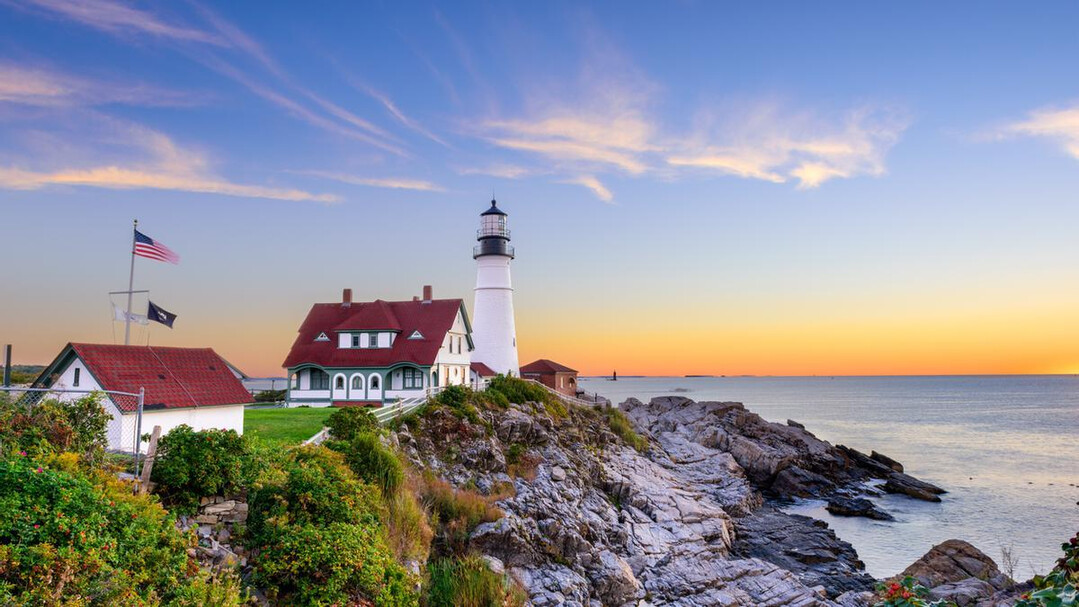
As tensions simmer between the United States and Canada, a small, seabird-laden island has become a poignant symbol of a long-standing dispute over where one nation's territory ends and the other's begins. Machias Seal Island, a mere 20 acres of windswept rock and rugged coastline, lies in the Gulf of Maine, at the mouth of the Bay of Fundy, and is the last remaining land territory disputed between the two North American neighbors.
Christmas on the Edge of Contention
On Christmas morning, Anthony Ross awoke on Machias Seal Island, his brother Russell already keeping watch over the tempestuous sea. The brothers, serving as lighthouse keepers, were isolated on the island, their only connection to the mainland a monthly helicopter visit. Despite the unconventional holiday setting, they made the most of it, sharing a Christmas dinner with turkey, gifts, and beer, and connecting with family back in Nova Scotia.
"It's 28 days straight out here; that's the toughest part," said Russell, a 20-year veteran lighthouse keeper. "But you get used to it."
A History of Contention
The dispute over Machias Seal Island dates back to the War of 1812, when both the United Kingdom and the United States claimed the island and its surrounding waters. In 1832, the UK built a lighthouse on the island, a physical assertion of its claim. Since then, Canadian lighthouse keepers have maintained a constant presence, safeguarding the island and its strategic location amidst valuable shipping lanes.
The Canadian government continues to staff the lighthouse, partly to assert its sovereignty over the island. "The opportunity we have to be here, to stay here, and hold the island, is important," Anthony Ross emphasized.
A Seabird Sanctuary
Beyond its geopolitical significance, Machias Seal Island is a vital sanctuary for seabirds. It hosts one of the largest and most diverse colonies of seabirds on the North American east coast, attracting birdwatchers and researchers from around the world. The island is particularly renowned for its population of Atlantic puffins, whose colorful beaks and tuxedo-like plumage make them a favorite among visitors.
The island's ecological importance is protected by the Canadian Wildlife Service, which limits tourist access to minimize disturbance to the nesting birds. Only two tour boats, one from Maine and one from New Brunswick, are permitted to land each day, carrying a maximum of 15 passengers each.
The "Gray Zone" and Lobster Fishing
The waters surrounding Machias Seal Island, known as the "gray zone," are a rich fishing ground, particularly for lobster. The lucrative lobster fishery has become a source of contention between Canadian and American fishermen, with both sides claiming the right to fish in the disputed waters.
The "gray zone" has become a "gold mine" as stated in the prior article. With lobster prices soaring, the stakes are high, and both countries are keen to protect their fishing rights. While an informal truce exists between the fishermen, concerns remain about overfishing and the potential for conflict.
Rising Tensions
In recent years, tensions between the US and Canada have escalated, with issues such as trade, tariffs, and border security fueling the discord. Machias Seal Island has become a symbol of these broader tensions, highlighting the unresolved territorial disputes that still exist between the two nations.
The island's lighthouse keepers, like the Ross brothers, find themselves at the center of this geopolitical drama, serving as guardians of a contested territory and witnesses to the ongoing struggle for sovereignty.
A Call for Resolution
As the dispute over Machias Seal Island continues, there are calls for a peaceful resolution. Some suggest joint management of the island and its resources, while others propose a formal demarcation of the maritime boundary.
Ultimately, the fate of Machias Seal Island remains uncertain, but its significance as a symbol of US-Canada relations is undeniable. The island's lighthouse keepers, its seabird inhabitants, and its rich fishing grounds all serve as a reminder of the complex and interconnected nature of the relationship between these two North American neighbors.
[Copyright (c) Global Economic Times. All Rights Reserved.]






























